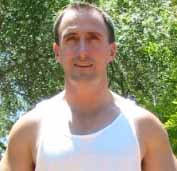The primary reason we need to eat food is to provide fuel for the body. This fuel comes from the breakdown of carbohydrates, proteins, and fats. To explain it simply, food is broken down to produce energy, and it takes many chemical processes for that to occur. Molecules are removed, heat is produced, but basically all that is left in the end is water, carbon-dioxide, and energy.
But it’s far more complicated than that. Carbohydrates, proteins, and fats, each get converted to energy but each take a different path.
Before I start on how fat is burned (or broken down), let me first explain a few key terms in the process of converting food to energy:
ATP: Adenosine Tri-phosphate is energy. It’s what the body uses as fuel at the cellular level. It can be produced using oxygen (aerobic), or without the presence of oxygen (anaerobic).
Glycolysis: An anaerobic process where glucose is converted to pyruvic acid.
Pyruvic Acid: If oxygen is available it is converted into acetyl CoA. If no oxygen is available it is converted into lactic acid.
Acetyl CoA: All this potential energy can only be achieved if it enters the Krebs Cycle, and to do this it must first be converted in to acetyl CoA.
Krebs Cycle: This is an eight step cycle that amongst other things, removes hydrogen and carbon-dioxide. It also produces a small amount of ATP.
The Electron Transport Chain: The final process in the breakdown of foods. This is where most of the ATP is formed.
How Fat Is Broken Down
There are a number of fats in the body but it’s the triglycerides, or “neutral fats”, that are usually converted to energy. The triglycerides come from both stored fat (from within fat cells and skeletal muscle fibers) and diet (the foods we eat). This single triglyceride will eventually produce 441 ATP molecules. When compared to the 38 ATP that are produced by glucose, you can easily see why fat is considered a much richer source of energy.
Step 1: The break-down of triglycerides
To be used for energy a triglyceride needs to be broken down into its basic units: one molecule of glycerol and 3 molecules of fatty acids. This process is called Lipolysis.
Step 2: Conversion to acetyl CoA
Although they both have the same outcome, the glycerol and fatty acids each follow a different path. Their goal is to enter the Krebs Cycle, but first they must get converted to acetyl CoA.
Step 2a: Glycerol to acetyl CoA
Glycerol, which is a basic sugar, follows the glycolytic pathway (glycolysis). During this process it is converted into pyruvic acid. For entry into the Krebs Cycle, the pyruvic acid must be converted to acetyl CoA.
This is done in 3 steps:
i) One carbon is removed from the pyruvic acid and released as carbon dioxide, which is released from the cell and exits via the lungs.
ii) Hydrogen atoms are removed and will later exit be used to produce more energy.
iii) What’s left is called acetic acid, and it is combined with coenzyme A to form Acetyl CoA
Step 2b: Fatty acids to acetyl CoA
Fatty acids are converted into Acetyl CoA via a process called beta-oxidation. During this process the fatty acid chains are broken apart, forming two acetic acid molecules. Each of these are then fused to coenzyme A, forming acetyl CoA.
Step 3: The Krebs Cycle
At this point both the glycerol and the fatty acids have been converted to Acetyl CoA and are now ready for the Krebs Cycle. As the Acetyl CoA is broken down, carbon-dioxide and hydrogen are removed. Once again the carbon-dioxide exits the body via the lungs. However, the hydrogen moves on to the final stage.
Step 4: The Electron Transport Chain
The Electron Transport Chain is the final process in the break down of food. Each of the hydrogen molecules that were removed during the previous processes have been transported here. They now combine with oxygen to form water (H20), with the resulting energy from this reaction causing the formation of ATP.
Ray Kelly is an Exercise Scientist with 15 years experience in the Health and Fitness industry. Sign up for his free 7 Day Weight Loss Course at: http://www.free-online-health.com
Wednesday, October 26, 2005
Subscribe to:
Post Comments (Atom)

No comments:
Post a Comment